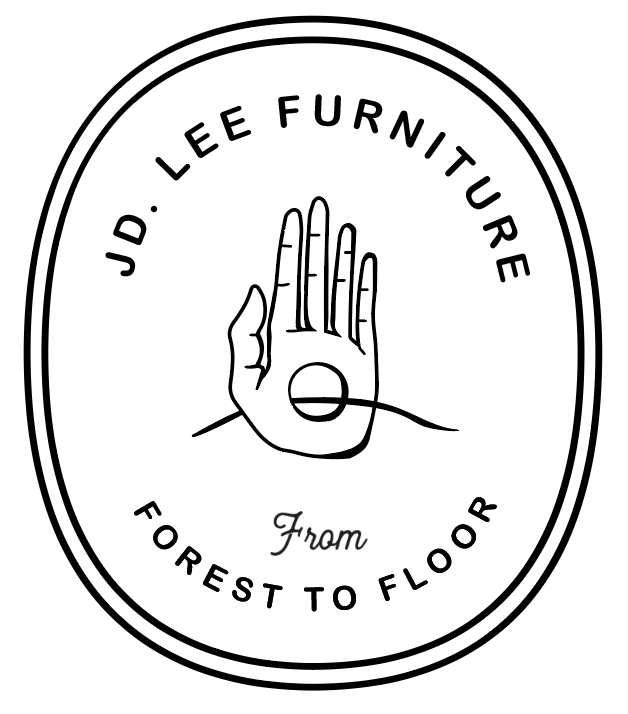Handcrafted
There is a real grounding in having your hands as your tool, I’m sure any artist or crafter would agree.
There is something incredibly satisfying about working with your hands. It is empowering. These bare hands, using time old techniques to create something beautiful. I often find myself just looking at my hands. At their leathery surface. The truth is I’m proud of each callous, the once soft spot in my inner palms that has been well worn and hardened over time. The small cuts and splinters sprinkled all over like a map of the previous weeks work.
I think it’s something you never stop perfecting. Each joint, each angle cut and each glue up, it becomes muscle memory…
each glue up, it becomes muscle memory, as your body learns to react to the timber you’re working on.
When there are two of us in the shop planing some large lengths of timber on the small jointer it honestly feels like a dance. Each length needs different attention from each tool so, with meters between us, we echo the movements of the other, making slight adjustments to account for grain direction, slowing down the feed rate etc. It is a really beautiful thing to be a part of. When working with an organic material no two sticks of timber are the same and one of the first things you will learn is you can only ever work with the wood. Each stick tells a story, shows you how it wants to be worked, what it wants to create and you have to work with it. I’ve heard, when Michelangelo was asked how he was able to craft David from a large rock his response was “It was easy, I just took everything away that was not David.” I relate to this.
There is a real grounding in having your hands as your tool, I’m sure any artist or crafter would agree. Especially today, when most professions involve multiple technologies to operate and people spend most of their days staring at a screen. Don’t get me wrong I definitely rely on these platforms too to an extent, but I am incredibly grateful to be able to spend my days in the shop creating the old school way.
When I was learning to play guitar as a kid I remember my dad telling me, “Everything is easy when you know how to do it,” something that still resonates with me today. Like all crafts, furniture making is something that just takes practice. You have to feel it out, and then repeat over and over again. I can spend forever reading about the best way to perfect my dove tails but until I actually get my hands dirty on the timber and feel the pressure of the saw as it resists each pass I won’t truly understand it. I think it’s something you never stop perfecting. Each joint, each angle cut and
Working with timber on larger projects can be extremely demanding physically. Each process from initial sorting, through to planing long edges ready for joining is a lot of hard work. If you don’t believe me, try hand belt sanding a 4.2m x 1.5m conference table in the peak of summer... We have a mantra in the shop when doing this kind of physically demanding work – ‘Paddle Power’, the harder it is in the workshop, the easier it’s going to be down at the local break when you’re paddling into those big waves. Having said that, the rewards of completing a demanding or ambitious project are always that much more satisfying.
Handmade furniture is a craft, it draws on knowledge gained over centuries of experience. It is the same practice today as it was 100 years ago. The machinery I use in my shop is a lot older than I am and has been a part of the journey for thousands of pieces of furniture before me. I’m sure the majority of those pieces are still around today. Whilst I take incredible pride in my work and every piece I create, I also still feel like an apprentice to my craft. There is still so much to learn. But understanding the path to perfection is a never ending journey keeps me humble.. most of the time.





